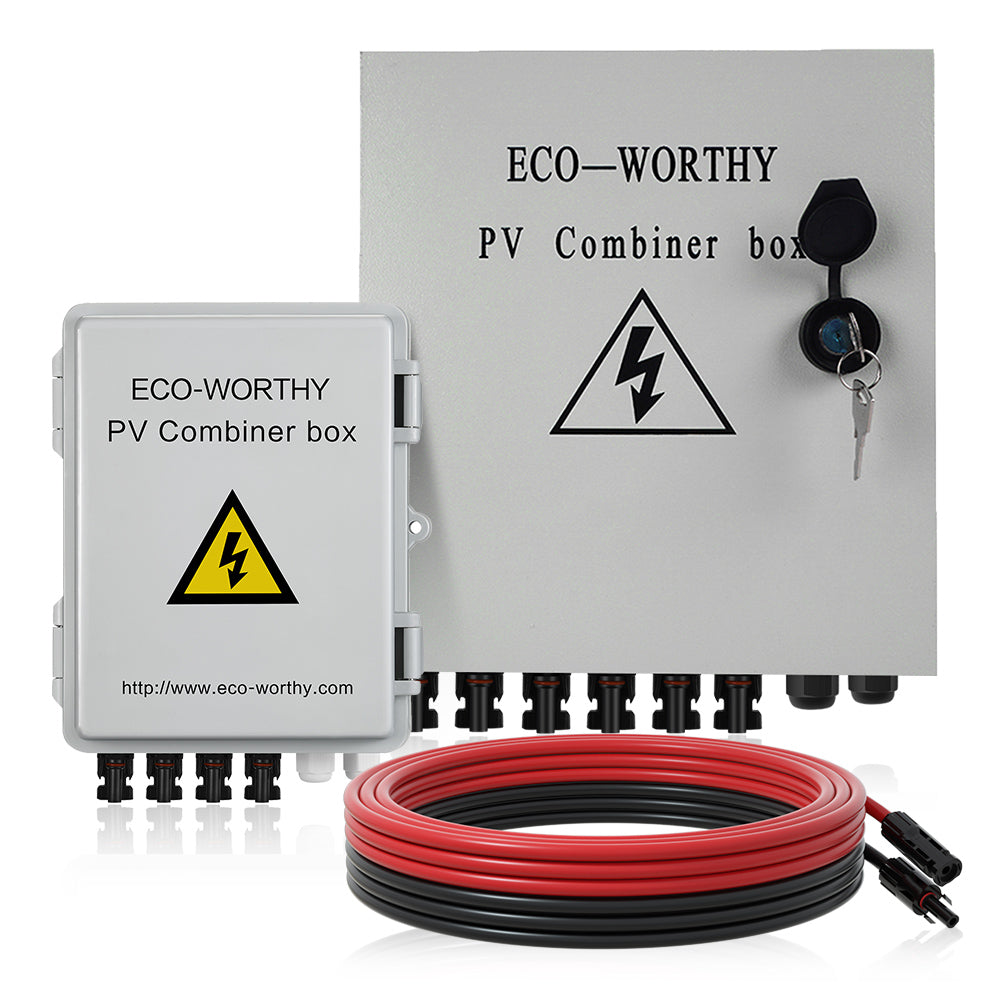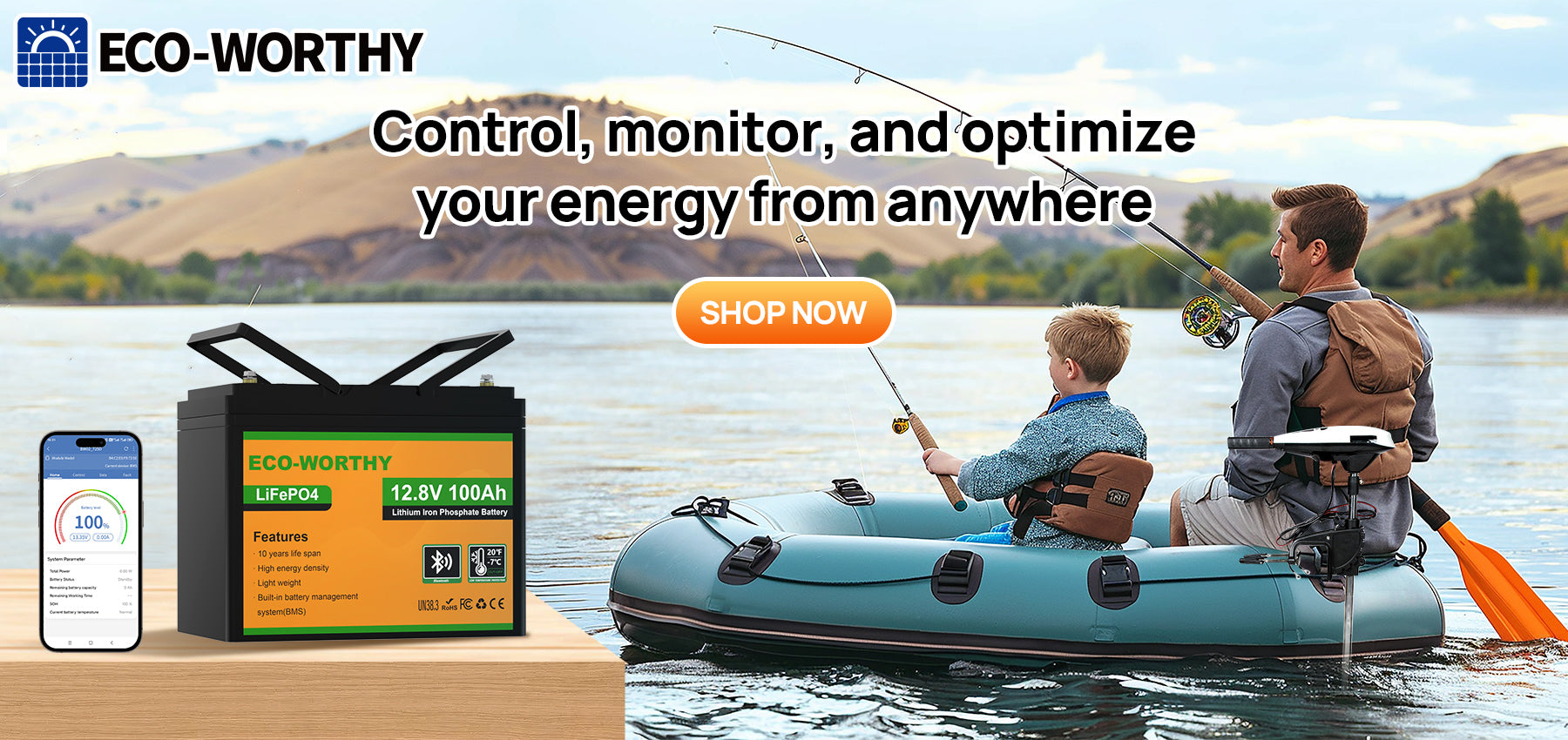Intro
When you purchased one solar power system online, which is needed to be install by yourself, you may wonder how to correctly put the units on different positions for safe and efficient working. Of course, if you don’t want to get bothered, you could pay for a professional electrician to worry those stuff for you.
However, if you are newbie in solar and want to do it yourself, we have some useful tips and suggestions for your solar power project.
Maximize solar panel array efficiency
Solar panel(s) plays the key role of the whole solar power system, its efficiency directly defines how much power you can get for use.
After ensuring that each panel in the array works normally, what you need to consider is how to make the array get the most solar irradiance it should, so that it’ll generate as much power as it can.
Rooftop is a regular choice when people imagine where the solar panels should be on, but that’s certainly not the only way people can choose to integrate their solar arrays. While there are certainly clear benefits to having solar panels installed on your roof, it’s not as one-sided as some people might think. Having your panels up and out of harm’s reach also puts them out of reach of easy maintenance and cleaning. Ground-mounted solar panels could be a better choice than roof-mount, depending on the situation.

If you’re considering solar panel installations for your home, cabin, or other structure, there’s a lot to look into before you make your choice. Of course, every individual situation is going to be different. Budget, open space, weather, climate—these all play a role in choosing between roof-mounted, ground-mounted, and other solar panel configurations.
Solar angel, which is the most important factor to irradiance. The things is, if you can find a suitable brackets set for ground setup, you may be able to change its direction according to the sun trail and different angles, also, the solar tracker will do this job for you. But the roof mounting will make you lose the flexibility.
Even if you don’t want to spend a lot on the angle issue, you can set the solar panel array for enough irradiance by placing it towards the south direction, of course, that’s the north hemisphere condition. Also, for the better angle to sun, solar panel installation with a suitable lean is helpful. You can set the panel tilt according to the local latitude, so it can get more sunlight in noon, which is the most effective period in a day.
E.g. For users who live in Phoenix, Arizona, Mount the panels with 35°tilt, and towards the south direction. So that the array would be more effective than usual tiled installation.
Make the wires as short as possible
Except the solar panel circumstances, yet there are a wide number of factors that impact how much power your system will produce, one of them is the wiring Losses.
In circuits, several components can cause a voltage drop, including resistors. Wires themselves have a small amount of internal resistance, the amount of which will be based on the gauge (thickness) of wire as well as its length.

Solar PV System Wiring Losses (From one to the other unit)
Suggested Values:
3% for most systems
1% if using thicker wires or very short runs
Usually, the thickness cannot be easily changed, due to the current amount in the system. So what we can do to reduce the wiring losses is mostly about wiring length. If you use the short wire not only in between the solar array and controller, but also from the controller to battery, battery to inverter, inverter to loads, the whole optimization wiring set will cut down about 8%-10% Losses for you.
Actually, this idea requires you to place the different units in a short distance. Usually, the solar array-controller connection cable is not able to be shortened, considering that the panels should be outside, but the controller is mounted indoors, especially when the panels are on the roof, it’ll require more extensions between them.
So the easy way to reduce the wiring losses is to keep the other units closer, including controller to battery, battery to inverter, inverter to loads.
Ensure good ventilation condition
For those solar power units indoors, a good ventilation is necessary, especially in hot area like Arizona.
The inverter and loads output heat when running, and the heat will remain around the whole room if there is no a vent. A temperature over 86°F/ 30°C will restrict the efficiency, mainly about 2% loss of battery discharge volume, and also high pressure to the inverter. The long time running in enclosing room is hidden danger to the lifespan of controller, battery and inverter.

So, for longer and more effective running, those solar power components should be in a place with good ventilation.
Keep the battery in warm
Lithium batteries rely on chemical reactions to work, and the cold can slow and even stop those reactions from occurring. Unfortunately, charging them in low temperatures is not as effective as doing so under normal weather conditions because the ions that provide the charge do not move properly in the cold weather. There's one hard and fast rule: to prevent irreversible damage to the battery, don't charge them when the temperature falls below freezing (0°C or 32°F) without reducing the charge current. Because the lithium batteries suffer from a phenomenon of lithium metal plating on the anode if charged at high rates in cold temperatures. This could cause an internal short of the battery and a failure.

The low temperature condition also restricts the releasable discharge capacity, as the above table, when the environment temp is below 25°C/77°F, its efficiency gets extremely decreased.
Battery capacity determines how long the loads can run after connecting with the inverter. So it’s absolutely necessary to keep the battery in a warm place. Or if you indeed to use it somewhere cold, prepare a heating box or battery box to insulate it from the freezing air.
Bottom Line
The sum of those kinds of efficiency losses will be extraordinary when your solar power system is over 1kw. Hence, by placing the different units in the ideal positions, you’ll get as much as possible power, just like what you expected from the beginning.















